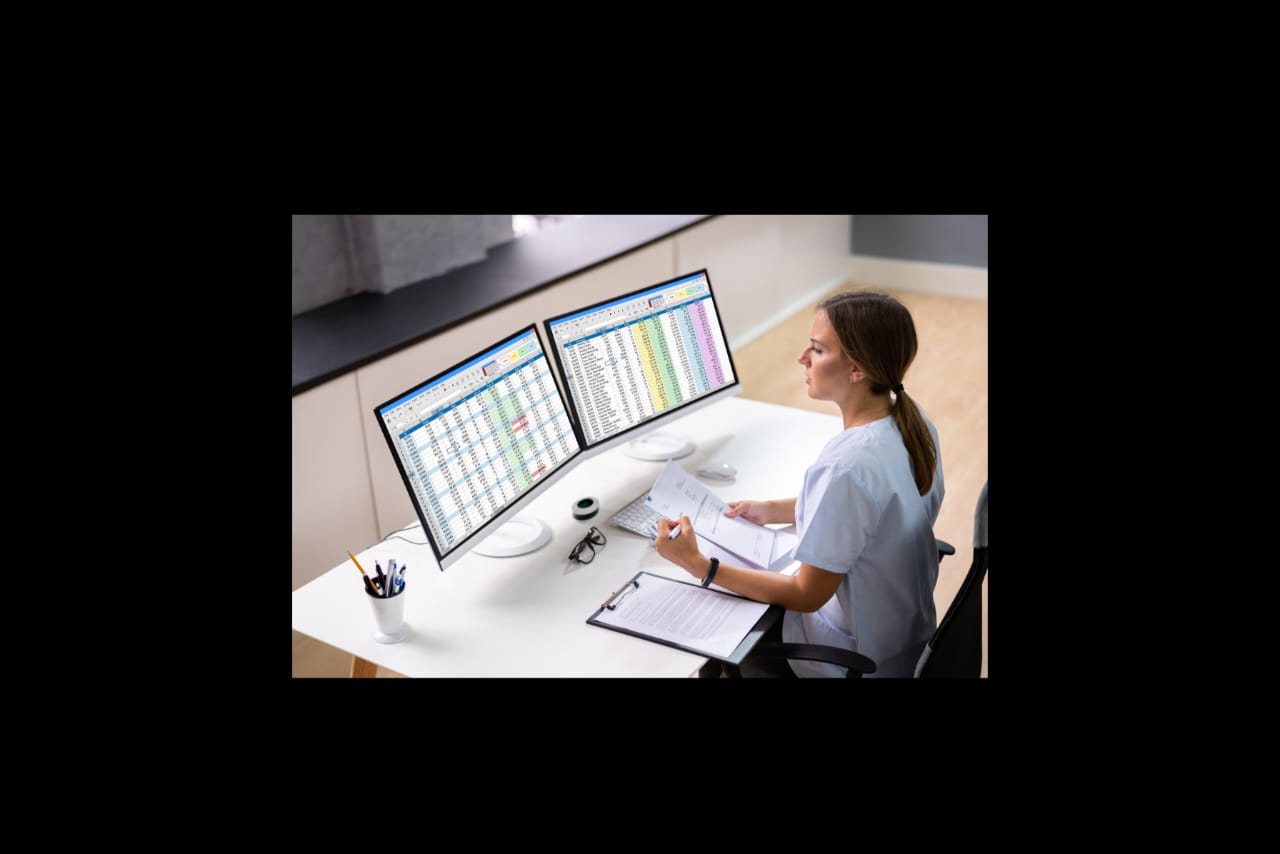
Leverage patient portals to improve payment rates and transparency in billing.
Healthcare practices across the United States are experiencing a significant shift in how patients expect to interact with their medical bills. Traditional billing methods that once sufficed are now creating barriers to timely payment collection, while digital solutions are demonstrating measurable improvements in both collection rates and patient satisfaction.
The integration of patient portals with billing systems represents more than just technological advancement—it's a strategic approach to revenue cycle management that addresses modern consumer expectations while improving practice profitability. Research consistently shows that practices implementing comprehensive digital billing solutions see collection rate improvements of 15-25% within the first year of implementation.
The Current State of Healthcare Billing
Medical practices today face mounting pressure from multiple directions. Insurance reimbursements continue to decline, administrative costs are rising, and patients are increasingly responsible for larger portions of their healthcare expenses through high-deductible health plans. In this environment, optimizing collection processes becomes essential for practice sustainability.
Traditional billing methods create significant friction in the payment process. Paper statements often take weeks to reach patients, creating a disconnect between service delivery and payment requests. When patients receive bills without context about the services they received, confusion and payment delays naturally follow. Additionally, conventional payment methods—checks, phone payments during business hours, or mailed payments—introduce unnecessary complexity for patients accustomed to digital transactions in every other aspect of their lives.
The statistics paint a clear picture: practices relying solely on traditional billing methods typically achieve collection rates between 75-85%. While this might seem acceptable, it represents a substantial amount of earned revenue that remains uncollected. More importantly, the administrative costs associated with pursuing these payments often exceed the amounts eventually collected.
Understanding Digital Billing Transformation
Patient portals equipped with integrated billing capabilities address the fundamental challenges of traditional billing by providing transparency, convenience, and immediate access to financial information. These systems create a direct communication channel between practices and patients, eliminating many of the barriers that contribute to delayed or missed payments.
The effectiveness of digital billing stems from its ability to meet patients where they already are—in a digital ecosystem where they manage banking, shopping, and other financial transactions. When healthcare billing aligns with these established patterns, patients respond more favorably and payment compliance improves significantly.
Successful digital billing implementations focus on three core principles: transparency in billing processes, convenience in payment options, and timeliness in communication. When patients can immediately see what services they received, understand their insurance coverage, and complete payments using familiar digital tools, the entire revenue cycle accelerates.
Medical billing services that specialize in digital transformation report that practices implementing comprehensive portal strategies typically see dramatic improvements in key performance indicators within six months of launch.
Essential Components of Effective Patient Portal Billing
Real-Time Financial Transparency
Modern patient portals provide immediate visibility into all aspects of the billing process. Patients can view charges as soon as they're posted, track insurance claim processing in real-time, and see exactly what amounts they're responsible for paying. This transparency eliminates the confusion that often leads to payment delays.
Effective portals translate complex medical billing codes into clear, understandable service descriptions. Instead of seeing "CPT 99213," patients see "Office visit - established patient, moderate complexity." This clarity helps patients connect their healthcare experience with the associated costs, making payments feel more justified and reasonable.
Streamlined Payment Processing
Digital billing systems must offer multiple payment options to accommodate different patient preferences and financial situations. Credit cards, debit cards, bank transfers, and electronic checks should all be available through secure, encrypted payment processors that meet healthcare industry standards.
The most effective systems store payment methods securely, allowing patients to complete future payments with minimal effort. One-click payment capabilities significantly reduce abandonment rates and encourage prompt payment behavior.
Automated Payment Plans
For larger balances, automated payment plan options provide immediate solutions without requiring staff intervention. Patients can select from pre-configured payment schedules based on their total balance, spreading costs over manageable timeframes while ensuring consistent cash flow for the practice.
These automated systems typically offer better compliance rates than manually negotiated payment plans because patients can choose options that fit their budgets without the pressure of phone conversations with billing staff.
Mobile Optimization
With over 60% of healthcare-related internet traffic now originating from mobile devices, patient portals must function seamlessly across smartphones and tablets. Mobile-optimized interfaces ensure that patients can access billing information and complete payments regardless of their location or preferred device.
Implementation Strategies for Maximum Impact
Systematic Patient Enrollment
The success of any patient portal initiative depends heavily on adoption rates. Practices achieving the highest enrollment rates, typically 70-85% within the first year limplement systematic enrollment processes that make registration convenient and valuable for patients.
The most effective approach involves integrating portal registration into routine office visits. Front desk staff trained to assist with registration during check-in can achieve significantly higher enrollment rates than practices that simply provide registration materials for patients to complete independently.
Staff Training and Support
Portal implementation requires comprehensive staff training that goes beyond basic system navigation. Team members need to understand how digital billing benefits both patients and the practice so they can communicate these advantages enthusiastically and effectively.
Training should cover common troubleshooting scenarios, patient support techniques, and integration points with existing practice management systems. When staff members feel confident using the portal themselves, they become much more effective at helping patients adopt these tools.
Integration with Existing Systems
Successful portal implementations require seamless integration with practice management software, billing systems, and electronic health records. Real-time data synchronization ensures that patients always see accurate, up-to-date information while minimizing administrative overhead for practice staff.
Many practices find that partnering with specialized revenue cycle management companies during implementation prevents integration problems and ensures optimal system configuration from the start.
Measuring Return on Investment
Collection Rate Improvements
The primary metric for evaluating digital billing success is collection rate improvement. Practices typically see increases from baseline rates of 75-80% to optimized rates of 90-95% within 12-18 months of full implementation.
These improvements result from multiple factors: reduced payment friction, better patient communication, more convenient payment options, and automated follow-up processes that keep accounts current.
Administrative Efficiency Gains
Digital billing systems significantly reduce administrative workload related to billing inquiries, payment processing, and collection activities. Phone calls about billing questions typically decrease by 60-70%, freeing staff to focus on patient care and other revenue-generating activities.
Paper and postage costs for billing statements also decrease substantially as more patients opt for electronic communications and online account management.
Cash Flow Optimization
Faster payment processing directly improves practice cash flow. Digital payments typically process within 1-2 business days compared to 7-10 days for mailed checks, reducing the time between service delivery and payment receipt.
This acceleration becomes particularly important for practices with high patient-pay portions due to increased prevalence of high-deductible health plans.
Advanced Digital Billing Strategies
Predictive Analytics
Modern billing systems can analyze patient data to predict payment likelihood and automatically adjust communication strategies accordingly. High-risk accounts might receive more frequent reminders or immediate payment plan offers, while reliable payers receive standard communication sequences.
These predictive capabilities help practices allocate collection resources more effectively while maintaining positive patient relationships.
Healthcare Financing Integration
Partnership with healthcare financing companies allows practices to offer extended payment terms, low-interest financing, and healthcare credit cards directly through patient portals. These options can be particularly valuable for high-cost procedures or patients with limited immediate payment capacity.
When financing options are readily available, patients are more likely to proceed with recommended treatments and pay balances promptly according to their chosen payment terms.
Automated Communication Sequences
Sophisticated portal systems can deliver personalized communication sequences based on patient behavior, payment history, and account status. These automated messages maintain consistent follow-up without requiring staff intervention, ensuring that no accounts fall through administrative cracks.
Specialized Applications
Mental Health Billing
Mental health practices face unique billing challenges related to insurance complexity and patient sensitivity around financial communications. Mental health billing systems must balance efficiency with discretion, providing clear financial information while maintaining appropriate privacy protections.
Digital portals excel in this environment by allowing patients to review billing information privately and complete payments without potentially sensitive phone conversations about mental health services.
Specialty Medical Equipment
Practices providing specialized medical equipment such as orthotics require billing systems capable of managing complex insurance pre-authorization processes and documentation requirements. Pedorthics billing exemplifies the need for sophisticated digital systems that can track authorization status, coordinate with insurance providers, and communicate approval processes clearly to patients.
High-Deductible Health Plans
The increasing prevalence of high-deductible health plans means more patients are responsible for substantial out-of-pocket expenses. Digital billing systems help manage these larger patient-pay portions by providing cost estimates before services, offering flexible payment plans, and integrating with health savings accounts and flexible spending accounts.
Overcoming Implementation Challenges
Technology Adoption Concerns
While some practices worry about patient resistance to digital systems, research shows that patients across all age groups appreciate billing transparency and payment convenience when properly supported. The key lies in providing adequate training and maintaining traditional payment options during transition periods.
Successful implementations focus on demonstrating value rather than forcing adoption. When patients experience the convenience of digital billing firsthand, adoption rates typically exceed initial projections.
Security and Compliance
Healthcare billing involves sensitive personal and financial information, requiring robust security measures and strict compliance with HIPAA regulations. Reputable portal providers implement bank-level encryption, multi-factor authentication, and comprehensive audit trails to protect patient data.
Practices should verify that chosen portal providers maintain appropriate security certifications and compliance documentation before implementation.
Integration Complexity
Modern practices often use multiple software systems for different operational functions. Successful portal implementations require careful coordination between patient portals, practice management systems, billing software, and electronic health records.
Working with experienced healthcare billing specialists during implementation can prevent costly integration problems and ensure optimal system performance from launch.
Future Developments in Digital Billing
Artificial Intelligence Applications
AI-powered billing systems are beginning to offer sophisticated capabilities including payment behavior prediction, automated payment plan optimization, and intelligent communication timing. These features promise to further improve collection rates while reducing administrative overhead.
Voice-Activated Systems
Integration with smart speakers and voice assistants may soon enable patients to check account balances, make payments, and schedule appointments using voice commands, further reducing friction in healthcare financial interactions.
Blockchain Technology
Blockchain applications in healthcare billing could provide enhanced transparency and security for billing transactions, insurance processing, and payment verification, potentially reducing disputes and improving patient trust.
Strategic Implementation Planning
Phase One: Foundation Building
Initial implementation should focus on core functionality including secure patient registration, basic billing information display, and simple payment processing. This foundation allows practices to begin seeing benefits while building staff and patient confidence with the new system.
Phase Two: Feature Enhancement
Once basic functionality is stable and adoption rates are climbing, practices can add advanced features such as automated payment plans, detailed insurance information, and enhanced communication tools.
Phase Three: Optimization and Analytics
The final implementation phase involves leveraging data analytics to optimize collection strategies, implementing predictive tools, and integrating advanced features that maximize return on investment.
Conclusion
The healthcare industry's digital evolution continues accelerating, and billing processes that fail to adapt will increasingly become competitive disadvantages.
The question for today's healthcare practices is not whether to implement digital billing solutions, but how quickly and effectively they can make this transition while maintaining quality patient care and operational stability.
To explore comprehensive digital billing solutions tailored to your practice's specific needs, consider partnering with experienced medical billing services that specialize in patient portal implementation and revenue cycle optimization.









